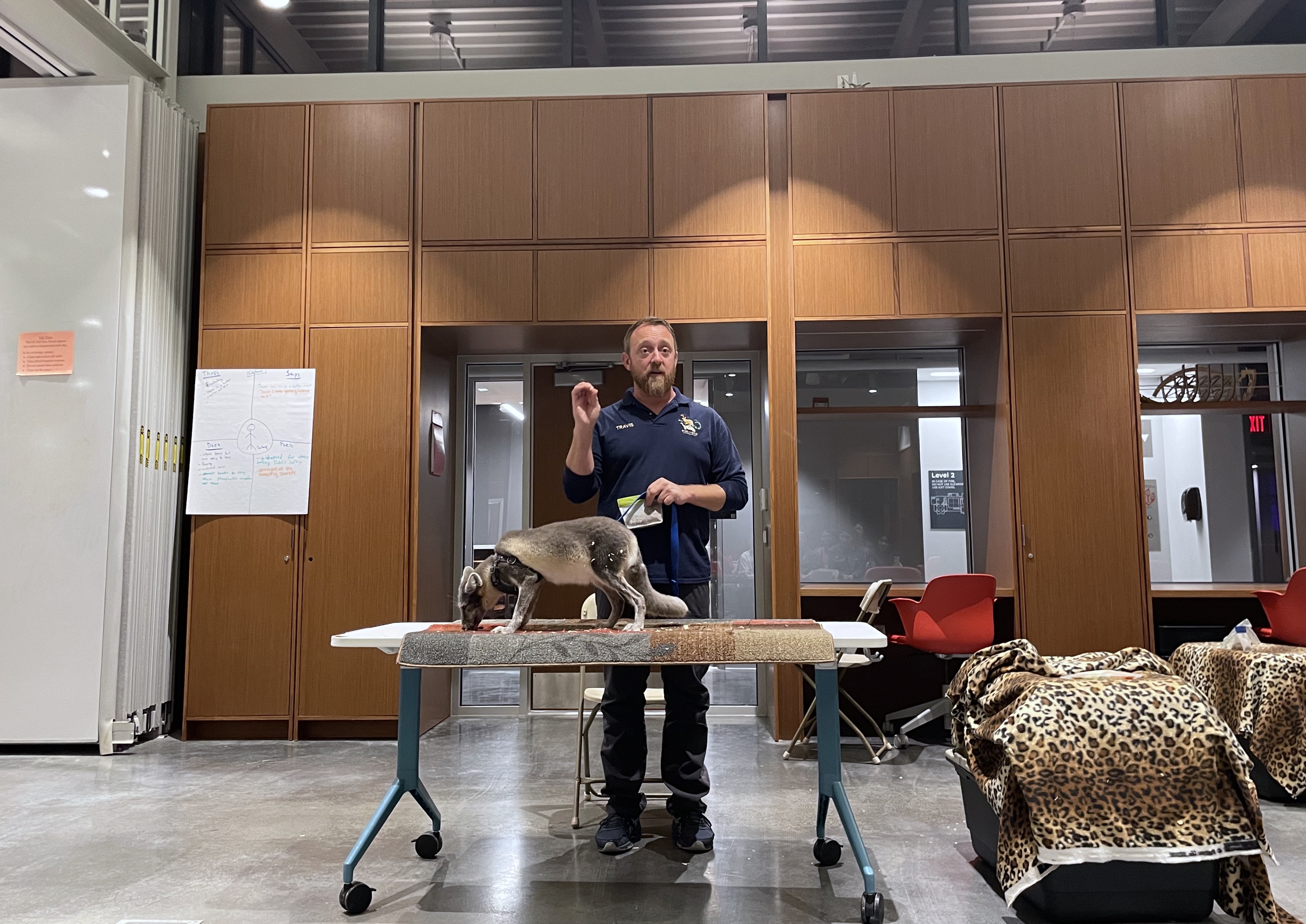Wednesday, May 7
Wildlife On Campus: Eyes of Wild Comes to Lawrenceville
Aki Li '25 (Editor-In-Chief, 144th Board) in News | September 30, 2022

On September 24, members of the Lawrenceville community gathered at the Eyes of the Wild event in the Gruss Center for Art and Design. The Sustainability Council invited Eyes of the Wild, an exotic animal rescue organization with over 60 different species, to campus to help further Lawrentians’ environmental education. The group hopes to connect environmental issues to actual living creatures to help personalize environmental conservation for future generations.
Heads of the Sustainability Events Planning Committee Alex Noviello and Andrew Noviello ’23 said that they hoped this event would “connect wildlife conservation with the Sustainability Council’s ongoing actions in waste management and outreach,” as well as act as an opportunity to also learn about endangered species at risk.
On Saturday, Travis Gale, the speaker for the event, introduced three animals to the community: Sylvie the Arctic Fox, Jabba the Cane Toad, and Ally-Bino the Wallaby.
Sylvie was adopted by the Eyes of the Wild when Arctic fox breeders couldn’t find enough zoos to adopt their litter. In Sylvie’s native habitat, the Arctic, temperatures are increasing four times faster than anywhere on the planet. As the Arctic shrinks, polar bears, with whom arctic foxes have a symbiotic relationship, are disappearing as well, diminishing the Arctic fox population alongside them.
Unlike Sylvie, Jabba is not in danger of extinction. However, he is contributing to the extinction of other species. Cane toads, originally native to South America, were brought to Australia by farmers in hopes of eradicating the Cane beetle. However, the toads did not eat the beetles, instead feasting on other native species. Over time, as the initial population of 100 toads increased to several million, Cane frogs became a serious threat to the native population as an invasive species.
Last but not least was Ally-Bino the Wallaby. Ally-Bino is, in fact, an albino wallaby, with snow white fur and red eyes, while most wallabies have brown-gray fur and dark eyes. Gale said that “no matter [their] pigment,” wallabies “jump and eat the same,” which teaches “a pretty simple but important lesson”—appearance doesn’t affect actions.
Finally, Gale stated that his opinion on zoos was they’d be worth having “if the education [provided at zoos] was worth the stress of the animals.” He said that if people only go to zoos to gawk, stare, and buy souvenirs, there isn’t much education going on, which is not worth the stress that animals face while under captivity.
Reflecting on the event, Praachi Chakraborty ’23 stated that she enjoyed the event, as even though it was “advertised as seeing animals for entertainment,” she was “educated on different aspects of the animal” such as the environmental impacts they suffered from or imposed.
Fifi Xu ’24 wrapped up the night by stating that the event helped her to “learn more about the animals as a whole,” and understand how environmental changes could have severe impacts on a species.
Related Articles
- Announcing: Valedictorian, Aurelian Speakers, and Faculty Speaker Sophie Liu ’27
- Welcoming Our New VPs for 2025-2026 Sophie Liu ’27
- Leo Min Takes the Win: The 2025-26 Student Body President Presents to You...ZUMBA Sophie Liu ’27
- Farewell to the V Formers of The Lawrence CXLIV Sophie Liu ’27
- Black History Month: Afrofest & Panels Angel Xin ’26 and Dorothy Lee ’26
Recent Articles
- Announcing: Valedictorian, Aurelian Speakers, and Faculty Speaker Sophie Liu ’27
- Senior Profile: Sophie Cheng ’25 Katherine Qiu ’27
- Debunking the Dining Hall Debate: Is Lawrenceville’s Dining Really That Bad? Isabelle Lee ’27
- Welcoming Our New VPs for 2025-2026 Sophie Liu ’27
- A Sweet Return: Melba Reopens with New Flavors and Community Spirit Ella Song ’27